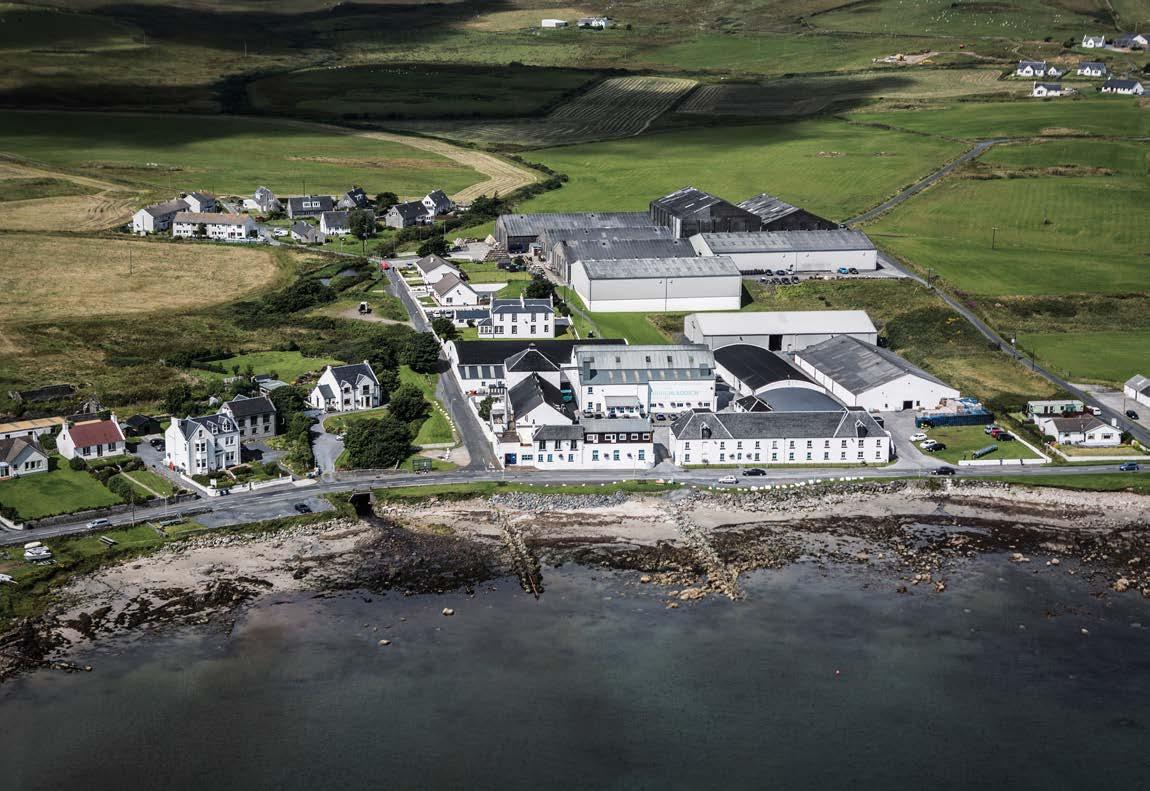
4 minute read
Environmental factors
Our Master of Malt puts forward the argument that terroir has an impact on Scotch whisky
Words by JOHN LAMOND
Terroir is a term used in winemaking. It is a French word and there is no equivalent in the English language. Its meaning encompasses soil structure, geology, angle of slope, aspect, micro-climate, hydrology and even generations of expertise. The Oxford Companion to Wine devotes more than a page (in excess of 2,000 words) to the subject.
Terroir is something that has divided the whisky industry for decades. Mark Reynier, who was part of the team that re-established Bruichladdich Distillery in 2002, has long been an advocate for the existence of terroir in whisky.
The problem is that one of the basic elements in whisky production, the grain, can come from almost anywhere, as Scottish distillers have imported barley from Europe since at least 1788 and nature’s variations can cause serious harvest problems.
Mark left Scotland after Bruichladdich was sold to Rémy Cointreau in 2012 and established Waterford Distillery in southern Ireland in 2015.
The current team at Bruichladdich continue to emphasise the importance of terroir to flavour. They separate barley parcels from different harvests, farms and even different fields and distil these separately. They say that “For us barley is a living, organic expression of the land, of the terroir in which it is grown. Our farmers are known to us by first name. They tell us about the soil, the wind, the drainage, the aspect, the micro-climate of every field.”
Mark, in Ireland, has been very voluble as he has continued to argue that terroir is important as a flavour influencer. He has focussed on the provenance of the barley, on where and how it is cultivated. His team has sourced 86 separate farms, including some that are organic or biodynamically run: growing barley on 19 distinct soil types. Each farmer’s crop is harvested, stored, malted and distilled separately. Therefore, they can capture each farm’s terroir within the spirit.
The bigger companies have denied even the possibility of the existence of a terroir influence on flavour and, in their case, the volumes of barley they need mean that the separation and monitoring of their grain stocks would be nothing short of a logistical nightmare.
To a degree, if you are a small distiller, the maintenance of such recording and storage is easier. Kilchoman, for example, has signs erected within its fields informing the field’s name, which strain of barley is planted, what the expected yield will be and how many bottles that will produce.
For a large distillery such as Roseisle or Macallan, such

TASTING NOTES
■ Fettercairn Distillery has launched the first in a series of small batch single malts. The Warehouse Collection pays homage to the warehouses where the whiskies mature and Warehouse 2 Batch No.001 is limited to 3,600 bottles.
The nose is medium-bodied and shows honey, vanilla and biscuity leather; with water there is little change, some pear drops and a touch of lemon zest. The flavour is quite full-bodied, medium-dry and fresh with some spicy ginger, citrus, stewed apples and ice cream with an edge of richness finishing long, rich and fruity. The spice is softer in the finish and there is some perfume on the tail. The cost is £55. fettercairnwhisky.com/en
■ Robin Russell at Robbie’s Drams on Ayr’s Sandgate began to major in malts in 2003. His whisky festival, Whisky And A’ That, first occurred in that year as part of the town’s Burns Festival. Demand was such that it now takes place annually in early June at Ayr’s Town Hall. Their worldwide online sales developed over the past dozen years and the knowledgeable team will happily despatch to almost all corners of the globe. Unusually, the website has a section headed ‘Non-auction’, which carries rarities that one normally has to trawl through auction sites to find. robbieswhiskymerchants.com
logistics are nigh on impossible. For Kilchoman, Bruichladdich, Springbank, Daftmill, InchDairnie or Arbikie it is not just possible, that is what they are currently achieving.
Now, an academic study led by Oregon State University and Waterford Distillery has been published in the scientific journal Foods. ‘The Impact of Terroir on the Flavour of Single Malt Whisk(e)y New Make Spirit’ looked at two varieties of barley grown at two distinct Irish farms, harvested over two consecutive seasons (2017 and 2018) and distilled at Tatlock & Thomson’s laboratory in Fife.
They found that both environment and season had a greater impact on the aroma and flavour of the new make spirits than variety alone and the report states: “Therefore, this study clearly demonstrates a ‘terroir’ impact on the flavour of new make spirit and highlights its potential importance especially in relation to single malt whisk(e)y.” S
To read the full academic study, go to mdpi.com/2304-8158/10/2/443
ABOVE LEFT:
Cardhu Distillery barley fields, Speyside
ABOVE RIGHT:
Bruichladdich Distillery, Islay










